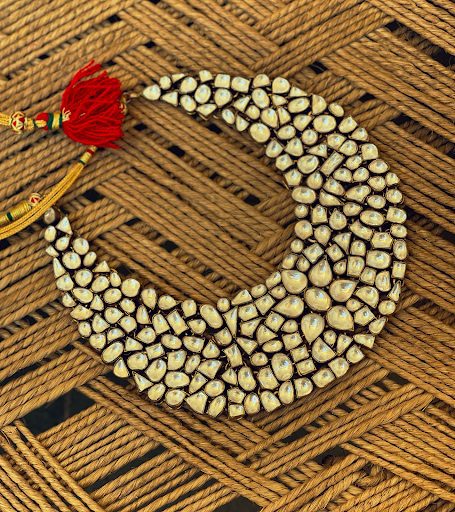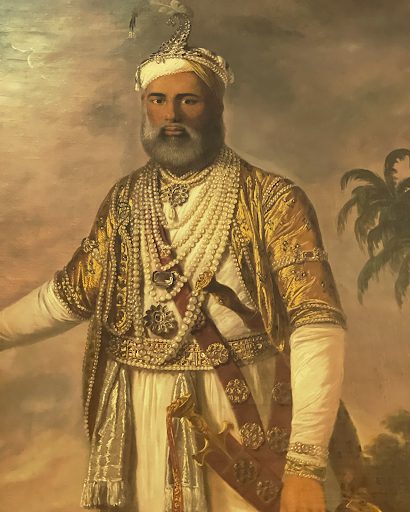
Most of you know about my sometimes biased amount of love for this country I call home. I think about it a lot. I also think about how my other half is English. He’s convinced that he’s my hidden white side I don’t flaunt as much as the brown ? But considering we’re talking centuries of internalized trauma of a nation, my extremely emotional nature, and his equally analytical bent, we haven’t found common ground on a few things quite yet, but by the end of our scuffles, it always dawns upon me how our opposites complement each other to make this a nice, wholesome relationship (a whole lot of east and some west ? )

As I get older, I grow more grateful for everything I have, and am surrounded by — family, friends, supporters, seasons, the space, the time, the feelings it makes me feel. You could maybe also put it as getting bound to one place, but I really did miss my desi cocoon during a month spent in the UK last year.
It was freezing and gray (maybe that was on me for not picking the right time to visit), the sun came out all of twice while I was there, and I just wasn’t prepared for it all. I longed to see light and shadows; longed to smell my country — would've even settled for the stink — hear all the annoying sounds, and meet people from my land who understood how I was feeling ?
My poor husband (bless his heart), woke up every day, determined to make me warm up (pun intended) to the UK a bit more. He tried so hard that he even came shopping with me (let me tell you this has happened only once before when he proposed to me in a shoe shop with a pair of black heels).

But allow me to take a shot at substantiating, or reflecting on my love for India, rather.
The jewellery community here has always been the pioneer in both the domestic and the international markets, but they simply have never gotten the name, fame or respect they deserve.
Munnu Gem Palace was a beacon of its time, probably the only one looked up to by the west, and he continues to be an inspiration to a lot of us here in India. His story urges me to satisfactorily represent this community, the karigars, the history, the culture, and the tradition of workmanship we continue to uphold, while in most other parts of the world, it’s pretty much dead as an art.
There’s a reason so many independent little designers from around the world come all the way here to work with gems and jewellery (and eventually make purely individual gains) — it’s the unmatched warmth of the people, the karigars, their karigari.
I shopped a lot of antique jewellery in the UK this time — some stunning pieces. Of course, I know every country has its own treasures steeped in history, but can I still get those pieces made there? Of course not.
Even if I hunted down the place, I doubt I’d find a craftsman who’s able to make or replicate an antique with justice. But back home, I give them a piece and they say, Didi ban jayega 🙂 with a casual confidence, and so much heart. And they aren’t overselling themselves either. They’ll then actually go on to employ the same ancient technique used to make the original piece, creating an impressive imitation which still won’t cost me my kidneys.
How beautiful and how easy, right?

The downside? Since the cost of capital in India is high and the number of Indians starting something of their own minuscule, the country becomes an easy, cheap opportunity for foreign entrepreneurs to get profitable here — if they survive their stay here, that is ?
I’ve been mulling over this of late, and since I mostly live inside my head, words at times softly escape my lips as I talk to myself, and sometimes out loud when I decide to bring it up at home, but I do think there might be others who feel a bit like I do.
While scrolling through social media, I’ll often see Indian brand pages, big and small, displaying photographs of our tiny towns and its people…the emotive beauty everyday life here has…but you know what strikes me about them? It’s that most (let’s say 95%) of these pictures have been taken by foreigners (primarily Caucasian) visiting for a few days or weeks — and not by our own people who were born here and breathe this air.
Why? Are we, who make this country, not good enough for it? Have you thought about this ever? Why do we pay so much attention and shower adulation to outsiders coming in to show us our own beauty? Read about us and tell us how amazing our history and traditions are? Do we not know it ourselves? And if we do, why don’t we encourage and support our own? Why are we still obsessed with white people being obsessed with us?

And consider this as purely criticism of ourselves — it’s not about the Brits, or the Americans, or anyone else who’s coming over to strike some gold — it’s about our self-esteem as a nation.
While I’m equally proud of the hospitality we extend and hope we never lose that as a culture, I also wish we were more mindful about exploitation, and just truly proud of who we are — without the need for external validation.
Is that too much to ask for?

Foreign publications will come to India (typically Rajasthan), talk about how amazing it is here, and feature 10 small businesses on a list, but no one’s asking why 70% of those businesses featured are owned by white people. The talented, toiling wholesaler, and the small shop owner with the most loyal generational customers, will be all but forgotten on those pages.
That bothers me.
And while I’m self-aware that this is coming from an emotional attachment to a place that has given me and continues to give me everything I have today, it’s worth a business rationing too, isn’t it?

A lot of times I wonder if the west will ever truly understand Indian jewellery. Will it not come from them truly understanding us first? When I’m in London, I love showing off my polkis and my yellow gold, but no one there has a clue about polkis to even begin to appreciate them. Even if they do, will they ever really love it and wear it with as much reverence as us? Or will they change it completely to make it theirs? Does the connection we have with our jewellery not come from a lifetime of seeing our people around us wear it everyday? For me, the grandeur and the nonchalance of how it can be worn, woven with its deep-rootedness to our culture and history, is probably what makes it so special. I know when I spot a polki haar on a cold gray day in London — even if it’s at the Victoria and Albert Museum — I almost have to fight tears while it sits there, a shining hallmark of my country and its workmanship. I stand before it, proud that my country can still make these treasures, and that we still wear them.
On this heavily emotional, time-to-call-my therapist note, I’m bringing you the 7th edition of the Travelling Dukaan. Lots of vintage pieces, almost all handmade, gorgeously reminding you of what India is capable of and why we need no one else to tell us that. I hope you enjoy looking and lusting after them just as much as I did. Know that what you seek is seeking you. One day ♥️

Do send a bit of love to the pieces you like, and to my patient, wonderful and loving team, including all the karigars who’ve crafted the pieces (and some this side too, please); buying is the last, least important step.
I never tire of answering price requests and other questions, so please don’t be shy to ask. Forgive me if my replies aren’t the most prompt though because, as you can imagine, I’ll be running around balancing more than I can handle on my plate, but I promise to get back to you asap. Bug me like a friend if you need something, but be nice.
Here’s a quick refresher on how it works :
Hope you enjoy this edition of the Travelling Dukaan as much as I do 🙂